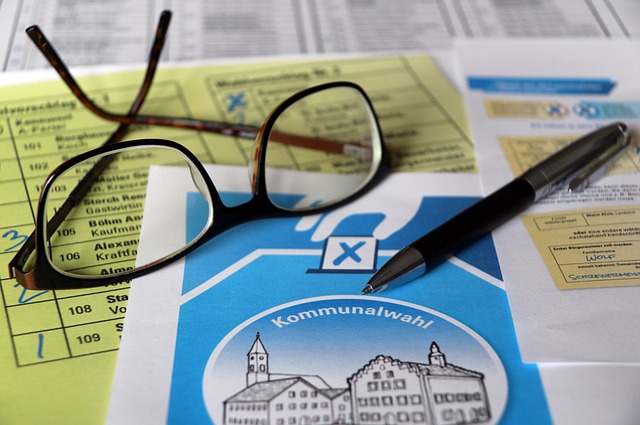Select DOT Compliance involves adhering to stringent safety standards set by the Department of Transportation (DOT) in areas like vehicle integrity, driver fatigue management, and supply chain security. Identifying applicable laws, including FMCSA regulations, is crucial. Conducting risk assessments, utilizing fleet management software, and implementing robust supply chain security measures enhance safety. Adhering to freight carrier safety standards, regular training, and audits ensure continuous compliance, improve operational efficiency, and build public trust.
Ensuring dot compliance is paramount for any business operating within regulated industries. This comprehensive guide delves into the essential aspects of meeting Department of Transportation (DOT) standards, providing a roadmap for achieving and maintaining full compliance. From understanding specific requirements to implementing robust safety measures and training employees, we explore each critical step. By following these practices, businesses can navigate the complex landscape of DOT regulations effectively, promoting safety and fostering operational excellence.
- Understanding DOT Compliance Requirements
- Identifying Applicable Laws and Regulations
- Conducting Comprehensive Risk Assessments
- Implementing Effective Safety Measures
- Training Employees on DOT Standards
- Regular Audits and Continuous Improvement
Understanding DOT Compliance Requirements

Understanding DOT Compliance Requirements
Select DOT compliance involves adhering to a comprehensive set of rules and guidelines designed to ensure safety and efficiency in the transportation industry. The Department of Transportation (DOT) sets forth critical standards that encompass various aspects, including vehicle maintenance, driver fitness, and supply chain security measures. By meeting these requirements, transportation businesses can mitigate risks, enhance operational integrity, and promote overall transportation safety technology.
Key components of DOT compliance include implementing robust fatigue management regulations to prevent driver fatigue, ensuring regular inspections and maintenance of vehicles to minimize safety hazards, and adopting secure practices throughout the supply chain. Compliance not only safeguards the well-being of drivers and passengers but also fosters public trust in the industry by demonstrating a commitment to responsible operations.
Identifying Applicable Laws and Regulations

Identifying Applicable Laws and Regulations is a critical step in ensuring DOT (Department of Transportation) Compliance. The first task involves assessing your operations to determine which federal, state, and local laws apply to your business. This process includes understanding regulations related to commercial vehicle safety inspection, such as those set by the Federal Motor Carrier Safety Administration (FMCSA). These rules cover various aspects, from vehicle maintenance and driver hours of service to hazardous material transportation and record-keeping.
Once you’ve identified the relevant laws, it’s crucial to stay updated on any changes or new regulations that might impact your operations. Engaging dot compliance consulting services can provide expert guidance tailored to your specific needs, ensuring you remain compliant with all applicable safety standards. This proactive approach, coupled with regular safety training for truck drivers, fosters a culture of adherence to DOT guidelines and helps maintain the highest standards in commercial vehicle safety.
Conducting Comprehensive Risk Assessments

In the realm of DOT compliance, conducting comprehensive risk assessments is a strategic step to ensure safe and secure operations. This process involves meticulously analyzing various aspects of a company’s activities, from vehicle maintenance to driver behavior, to identify potential hazards and risks. By leveraging fleet management software solutions, organizations can streamline this assessment process, gathering real-time data on vehicle condition, driver performance, and compliance history. This data-driven approach allows for proactive measures to mitigate risks before they escalate, thereby enhancing overall safety.
Moreover, integrating dot accident investigation procedures into the risk assessment framework enables companies to respond swiftly and effectively to any incidents. By implementing robust supply chain security measures, including regular audits and training programs, businesses can create a culture of accountability and continuous improvement. This holistic approach not only meets DOT regulations but also fosters an environment where safety is prioritized at every level, leading to a significant reduction in accidents and potential liabilities.
Implementing Effective Safety Measures

Implementing effective safety measures is a cornerstone of achieving and maintaining Select DOT Compliance. It involves adhering to stringent freight carrier safety standards set by the Department of Transportation (DOT). These standards encompass a wide range of areas, including vehicle maintenance, driver training, and proper handling of hazardous materials as outlined in the DOT hazardous material guidelines. Regular safety inspections, up-to-date logs, and adherence to load securing practices are critical components that contribute to minimizing risks and ensuring the safety of all road users.
Safety training is a vital tool in promoting a culture of compliance within any transportation company. DOT compliance training equips employees with the knowledge and skills needed to navigate the complex regulatory environment. By fostering a safe work environment, companies can reduce incidents, prevent accidents, and ultimately uphold their responsibility to adhere to DOT regulations, thereby enhancing their overall operational efficiency and reputation.
Training Employees on DOT Standards

Training Employees on DOT Standards is a critical step in achieving and maintaining Select DOT Compliance. It ensures that all personnel involved in the freight transport industry are well-versed in the safety regulations for trucking industry, thereby enhancing overall operational efficiency and effectiveness. By imparting knowledge about transportation safety technology and best practices, companies can mitigate risks, reduce accidents, and foster a culture of safety within the workforce.
This training should cover various aspects, including proper handling of cargo, adherence to specific DOT guidelines for different types of vehicles, and the use of advanced safety features in trucks. Regular refreshers and updates on these standards are also essential, considering the dynamic nature of the industry and continuous advancements in transportation safety technology.
Regular Audits and Continuous Improvement

Regular audits are a cornerstone of any robust Select DOT Compliance strategy. By conducting thorough and frequent reviews, companies can identify areas where they excel and pinpoint potential gaps in their adherence to Department of Transportation (DOT) regulations. These audits not only ensure current compliance but also provide an opportunity for continuous improvement. By fostering a culture of proactive compliance, organizations can stay ahead of changing guidelines and maintain optimal safety standards, particularly within the dynamic landscape of truck stop safety initiatives.
Continuous improvement involves a commitment to learning and adaptation. Staying DOT compliant means regularly updating policies and procedures to align with evolving regulations, such as streamlining the dot medical card renewal process. This proactive approach not only reduces the risk of non-compliance but also demonstrates a company’s dedication to maintaining the highest standards in the industry. Through regular audits and a relentless pursuit of improvement, businesses can ensure they remain not just compliant, but also leaders in safety and regulatory adherence.
Ensuring DOT compliance is not just a legal necessity, but a strategic imperative for any organization involved in transportation. By understanding the requirements, identifying applicable laws, conducting thorough risk assessments, implementing robust safety measures, training employees on industry standards, and conducting regular audits, businesses can create a culture of safety that drives continuous improvement. Selecting the right DOT compliance strategies and staying vigilant across all aspects will help organizations maintain high safety standards, reduce risks, and foster a responsible transportation ecosystem.
